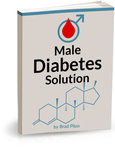LIVE IT: Reduce Risk of Type 2 Diabetes with Aerobic Exercise
Lifestyle Tags: Aerobic, Diabetes, Exercise, LIVE, Reduce, Risk, TypeNo Comments »

Whether it’s a Zumba class, kickboxing, or going outside for a jog, aerobic exercise has several health benefits, including reducing the risk of diabetes.
http://www.liveitlomalinda.org
Join the conversation and use #LiveItLomaLinda #LiveIt
Transcript Below:
Show Open
Patricia Kelikani (Host)
Health Journalist
Whether it’s a Zumba class, kickboxing, or going outside for a jog, aerobic exercise has several health benefits, including reducing the risk of diabetes.
Dr. Mark Reeves (Host)
Surgical Oncologist
Obesity affects one-third of the adult population in the United States and can lead to a host of health problems including diabetes type 2.
Patricia Kelikani (Host)
Dr. Hessinger and his colleagues studied a local running club during their 6-month long marathon-training program. What they found is in the untrained group of both males and females there was an increase in a protein called adiponectin. So there’s good news if you’re middle-aged and overweight you can reduce your risk of diabetes by simply exercising.
Dr. David Hessinger
Professor of Physiology & Pharmacology
That pretty much agreed with what was already there in the literature. The difference for us was two-fold. One, we used middle-aged subjects, instead of college-aged, and, two, most of the studies in the literature were done with athletes. What we found is over the course of that six months, there was this progressive increase.
Patricia Kelikani (Host)
What are the tips for today? Incorporate aerobic exercise, like running, walking, or biking, at least 5 times a week for 30 minutes.
Dr. Mark Reeves (Host)
What we eat is important as well.
Patricia Kelikani (Host)
Make a conscious effort to limit rich desserts and fast foods. And go for a more balanced, natural diet with fiber.
Dr. David Hessinger
“Because fiber is one of those things that if it’s plentiful in the diet, we don’t absorb as many of the calories, and we certainly don’t absorb them as quickly, so you don’t get that insulin spike.
Patricia Kelikani (Host)
There are also additional benefits to aerobic exercise.
Dr. David Hessinger
“It makes you feel good, when you’re finished. It feels very good when you stop. It’s related to the endorphins that are produced, naturally, in response to the continued challenge you put on the body. I think walking, even, is a good exercise. It’s aerobic. Almost everybody can do that.
Dr. Mark Reeves (Host)
There’s your tip for the day…
Patricia Kelikani (Host)
On how you can live healthier, longer.
All health and health-related information contained in this program is general in nature and should not be used as a substitute for a visit with a health care professional. Viewers should consult their health care providers concerning any medical condition or treatment.
Part two of a three-part series presented by Stanford Health Library.
Type 2 diabetes, formerly called adult-onset diabetes, is the most common type of the disease, affecting 95 percent of people with diabetes. Type 2 diabetes affects people at any age, even during childhood. However, this type of diabetes develops most often in middle-aged and older people, and those who are overweight and inactive.
Speakers: Baldeep Singh, MD
Clinical Assistant Professor, Medicine – General Medicine Disciplines, Stanford University School of Medicine and Kathleen Wasoski, DPT, OCS
Video Rating: / 5





























































